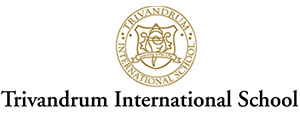In the rapidly evolving global landscape, creativity and innovation have become indispensable skills. It’s essential for educational institutions to cultivate these traits in students, preparing them to face future challenges with ingenuity and resourcefulness. Here’s how schools and teachers can encourage creativity and innovation in their students.
Nurturing an Environment of Curiosity
- Encourage Questioning: Always welcome students’ questions, no matter how out-of-the-box they may seem. Questions are the seeds of curiosity and creativity.
- Freedom to Explore: Give students the liberty to explore topics beyond the curriculum. This fosters a love for learning and encourages them to delve deeper into subjects of interest.
Fostering a Culture of Innovation
- Project-Based Learning: Engage students in projects that require creative solutions. This encourages them to think critically and innovatively.
- Real-World Problems: Pose real-world problems for students to solve. This approach makes learning relevant and ignites innovative thinking.
Promoting Collaborative Learning
- Group Projects: Encourage group projects where students can brainstorm and share ideas. Collaboration often leads to more creative solutions.
- Diverse Teams: Mix students with different skills and backgrounds in teams. Diversity can spark unique perspectives and innovative ideas.
Integrating Technology
- Digital Tools for Creativity: Leverage digital tools like graphic design software, coding platforms, or digital storytelling tools to encourage creative expression.
- Online Collaborative Platforms: Utilize online platforms for students to collaborate on projects with peers from around the world, broadening their perspective and fostering global innovation.
Encouraging Risk-Taking and Accepting Failure
- Safe Space for Experimentation: Create a classroom environment where taking risks and making mistakes is seen as a part of the learning process.
- Learning from Mistakes: Encourage students to analyze and learn from their mistakes, rather than fearing failure.
Building Confidence and Independence
- Self-Directed Projects: Allow students to undertake self-directed projects on subjects they are passionate about. This not only boosts confidence but also nurtures independence in thinking.
- Positive Reinforcement: Regularly acknowledge and celebrate creative efforts and achievements, big or small.
Exposing Students to Diverse Perspectives
- Guest Speakers and Workshops: Invite artists, entrepreneurs, scientists, and other creative professionals to share their experiences and insights.
- Cultural Exposure: Integrate diverse cultural content in the curriculum, exposing students to different ways of thinking and living.
Developing Critical and Reflective Thinking
- Debate and Discussion Forums: Regularly organize debates and discussions on various topics. This helps in developing critical thinking skills.
- Reflective Journals: Encourage students to keep journals where they can reflect on their learning experiences and creative processes.
In a world that’s constantly changing, creativity and innovation are not just about arts or sciences; they are essential life skills. By nurturing these qualities in students, educators play a pivotal role in shaping individuals who are not only prepared for the future but also capable of leading change. The journey of fostering creativity and innovation in students is ongoing and ever-evolving, much like creativity itself.



